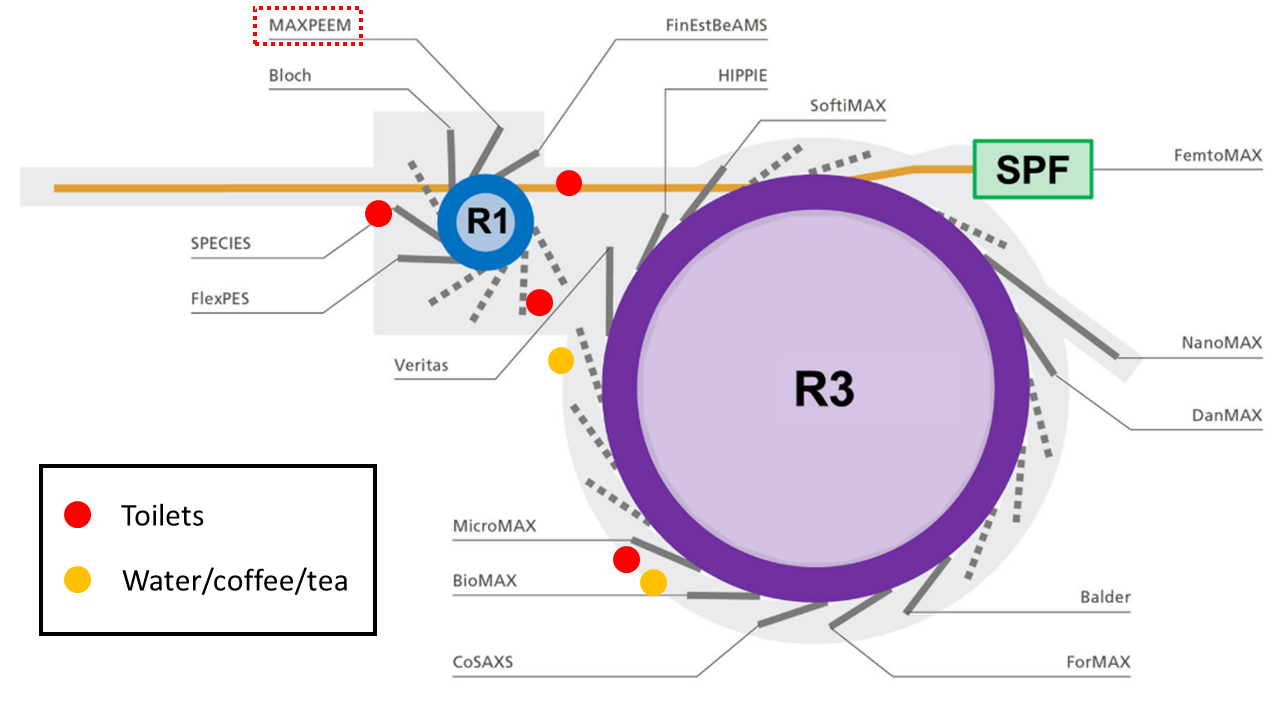Tips around beamline
Tips for designing an optimal measurement plan
Below are a list of considerations. It’s non-exhaustive. As development work is ongoing, some of these considerations may be outdated. Consult with your local contact.
Multi-hour, automated overnight measurements with the beamline may be infeasible, due to heat-induced deformation of the M1 mirror (need to periodically re-tune M1 pitch, etc.). The measurements could be semi-automated, if a user periodically stops by the hutch.
Unless the surface is ultra-clean, chemical mapping with XAS-PEEM is preferred to XPEEM, as the yield of secondary electrons is expected to be higher versus primary photoelectrons
The continuous application of a high voltage between the microscope objective and sample surface generally leads to carbon deposition - periodic surface regeneration may be needed
Scangui (ascan macro) enables most beamline and microscope parameters to be swept –> automated scans
Five slots exist in the storage chamber attached to the main chamber, though 2-4 slots are typically occupied. Talk to your local contact about storing sample(s) inside.
Micro-ARPES typically works well with photon energies up to ~100 eV. The photon flux decreases above 100 eV for the 1200 lines/mm grating, plus the photoionization cross-sections decrease with increasing photon energy.
The beamline elements are contaminated with carbon, yielding lower-than-expected photon flux at energies at and near the carbon K-edge
The beamline lacks proper i0-type normalization, needed for generating high-quality X-ray absorption spectra. A gold mesh exists upstream of the M4 mirror, but the mesh is dirty and we cannot deposit fresh gold onto it.
When XAS measurements are desired, check the literature (and/or use Google Image search) to determine if the edge has been measured before - having a core level doesn’t mean you have an absorption edge
Tips for operating the beamline
Track the beamline flux by periodically inserting the photodiode into the beam path; tuning the pitch of the M1 mirror is usually sufficient to maximize the flux.
The spot size at the sample position is around 15 um (H) x 15 um (V) with a 0.15 mm exit slit opening in the vertical and horizontal directions (the image at the exit slit is demagnified by a factor of 10 at the sample position).
Peak photon flux is obtained at ~100 eV (for the 1200 lines/mm and 300 lines/mm gratings)
Toilets and water/tea/coffee stations
Tea, coffee, hot chocolate, etc. are available for free, 24/7. The approximate locations of the drink stations and toilets are displayed in the schematic layout of the Lab.

Figure 1. Schematic of MAX IV, showing the toilets and drink stations that are easily accessible from MAXPEEM.
WiFi
maxiv_user (log in with MAX IV DUO username and password)
maxiv_visitors (intended for 1 day users, Internet access only, receive a token through your email address)
eduroam (Internet access only)
maxiv_staff (not applicable to users)
For more details on access privileges, etc. see https://www.maxiv.lu.se/beamlines-accelerators/controls-it/it-services/wifi/
Food options
In short, the main options are: * visiting food trucks (usually located close to the main entrance, where the reception is, from 11-13 Monday - Friday); call Reception (+46462229872) for the latest schedule. * cooking in the user kitchen at MAX IV and/or in the guestrooms at Forskarhotellet * microwaving frozen food purchased from the vending machines * ordering food delivery (e.g. foodora.se) * stationary food truck “Dagens lunch 60” serving burgers and daily specials (5 minute talk from the Lab, Odarslövsvägen 50)
See https://blochdocs.maxiv.lu.se/food.html for more details.
Resting and exercise rooms
A sleeping room is available in the basement of the E-building. First come, first served. An exercise room, equipped with a pull-up bar, bench, weights and cardio training machines, is also available in the basement.
Tools and supplies available in the MAXPEEM prep lab
Hand tools: tweezers, pliers, screwdrivers, wrenches, etc.
Vacuum parts
Kapton tape
Dessicator
Optical microscope
EPO-TEK epoxies, pastes, etc. stored in the D3 chemical lab (fridge). Ask if you need something special.